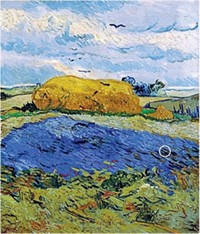Advertisement
Grab your lab coat. Let's get started
Welcome!
Welcome!
Create an account below to get 6 C&EN articles per month, receive newsletters and more - all free.
It seems this is your first time logging in online. Please enter the following information to continue.
As an ACS member you automatically get access to this site. All we need is few more details to create your reading experience.
Not you? Sign in with a different account.
Not you? Sign in with a different account.
ERROR 1
ERROR 1
ERROR 2
ERROR 2
ERROR 2
ERROR 2
ERROR 2
Password and Confirm password must match.
If you have an ACS member number, please enter it here so we can link this account to your membership. (optional)
ERROR 2
ACS values your privacy. By submitting your information, you are gaining access to C&EN and subscribing to our weekly newsletter. We use the information you provide to make your reading experience better, and we will never sell your data to third party members.
I think the researchers from the University of Illinois, Urbana-Champaign, mentioned in "Surface Bonding Reconsidered" may be looking incorrectly at the bonding model (C&EN, May 9, page 7). Instead of the Franck-Condon principle being violated, I contend (after being involved with organosilicon research for many years) that the bonding between the bromine and silicon atoms may not be a strict sigma bond.
There is evidence in long-chain, single-bond organosilanes for a moderate degree of electron delocalization; long-chain organosilanes can be added to chips using photolysis. There may also be other orbital interactions at play in this bonding situation, as both silicon and bromine have higher order and shape orbitals available. There is no question that the phonons stimulate the bond breakage, but I do not see that it is cut-and-dried evidence that conventional bond-breaking means have been violated.
Roger A. Simon
Littleton, Colo.
More on Prussian blue
The historical importance of the Prussian blue pigment was nicely summarized in Stephen K. Ritter's account of the ACS Division of Inorganic Chemistry's symposium, "The Metal-Cyanide Renaissance, On the Tricentennial of the Synthesis of Prussian Blue" (C&EN, May 2, page 32).
It should be noted that in addition to Prussian blue, FeIII4[FeII(CN)6]3, being the first coordination compound and itself an important milestone in chemistry (akin to the synthesis of urea from cyanate), it typifies many important facets of modern inorganic chemistry. It is a mixed-valent compound that possesses an extended 3-D solid-state structure, which imparts many technologically important optical, electrical, and magnetic properties. In addition to the blue color being a widely used pigment, the route for making Prussian blue was commercialized as the blueprinting process. Prussian blue's Fe-C bond, in fact, arguably made it an organometallic compound, prior to it being fashionable. (Obviously, cyanide carbon is considered inorganic carbon, but no more so than in carbon monoxide, the prototypical organometallic ligand.) Its extended 3-D network structure is now being actively emulated worldwide in other systems under the rubric of "crystal engineering."
As conveyed in the symposium, substituting the Fe(II) and/or Fe(III) sites with other metal or molecular ions has significantly expanded the properties to include, for example, room-temperature, single-molecule, and photomodulated magnetism, as well as uses for spin-crossover materials, sensors, electrodes, gas absorption and separation, and so on. This is in addition to the use of Prussian blue as an antidote for thallium and radioactive cesium poisoning.
The study of Prussian blue has led to the discovery of many important phenomena, which are of increasing scientific and technological interest in contemporary inorganic chemistry.
Joel S. Miller
Salt Lake City
The excellent article on the ACS symposium celebrating the tricentennial of the synthesis of Prussian blue by Heinrich Diesbach in 1704 cites Andreas Ludi's characterization of this substance as "the first synthesized coordination compound." Actually, other candidates exist for this singular honor.
Perhaps the earliest candidate for this distinction is the bright red alizarin dye, a calcium aluminum chelate compound of hydroxyanthraquinone. The source of the calcium and aluminum ions was clay, and the hydroxyanthraquinone was obtained from roots of the madder plant (Rubia tinctorum), found in Europe, Asia Minor, and the British Isles. (The synthesis of artificial alizarin in 1869 by German chemists Heinrich Caro, Carl Graebe, and Carl Liebermann and English dye chemist William Henry Perkin caused a crisis and virtual elimination of the growing of madder in various countries.) The exact origin of the dye is shrouded in antiquity, but it was first used in India and was known to the ancient Egyptians and Persians long before it was used by the Greeks and Romans. If one accepts the Bible as actual history, Joseph's "coat of many colors" may have been treated with alizarin, which is an excellent textile dye.
Alizarin was also mentioned by Herodotus, the father of history, in about 450 B.C. It was probably the red dye used by Alexander the Great to win a decisive battle against a much larger army 120 years later. Alexander dyed the uniforms of most of his soldiers with bloodlike splotches and enticed the Persians into heedlessly attacking what they thought was a demoralized force of badly wounded men--possibly the first recorded example of camouflage or chemical warfare. More recently, madder dyes became an integral part of American revolutionary history; they were used to dye the British "redcoats."
Probably the first scientifically recorded observation of a completely inorganic coordination compound is the formation of the familiar tetraamminecopper(II) ion, [Cu(NH3)4]2+. This observation is found in the Commentationium Metallicarum Libri Quatuor de Natura Metallorum of 16th-century German alchemist and physician Andreas Libavius, who noticed that aqua calcis (limewater, saturated calcium hydroxide solution, Ca(OH)2) containing sal ammoniac (ammonium chloride, NH4Cl) became blue in contact with brass (an alloy of copper and zinc).
George B. Kauffman
Fresno, Calif.




Join the conversation
Contact the reporter
Submit a Letter to the Editor for publication
Engage with us on Twitter